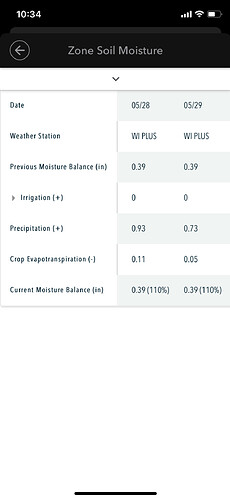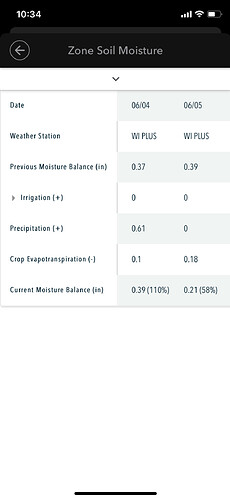Thanks. And yeah, I’m by far most familiar with grass.
No, I think ALL systems are VERY difficult to work with a zone containing differing plants. It’s not Rachio, or any other system, it’s the fact that it is impossible to water in the most correct way for trees, shrubs, flowers and lawn with the same system. Trees can go weeks or longer without water, but drain water from everything around them. Most shrubs can go a week or more, while some flowers wilt if they don’t receive water every day. Lawns do best watered about twice a week, but even without other crops in the area, soils limit how much water can be applied at once, often requiring watering more often. It can be a royal pain, and one without a simple answer.
Also, as to water needs, I have found that lawns typically require the most water week over week, as more deeply-rooted crops can get more water from the deeper roots. So, most of the time it’s pretty safe to use the lawn to determine watering needs. Shrubs and trees in the same zone won’t need watered as often, but usually won’t be harmed the excessive water. And with large trees in the same area, it’s just often necessary to water more overall, due to the water sucked away by them.
Flowers are a different case, and can require daily water even if the grass doesn’t. And while my best friend waters his lawn twice a day, every day, and swears by it (even though it’s not recommended, his lawn does look good), if you don’t want to do that, an alternative is to water the lawn normally with Flex Daily, and then set a Fixed program to give the same zone (but meant for the flowers) 2-3 minutes of water in the middle of the day, every day. That may not be efficient, but it helps my wife’s butterfly garden survive SC summer sun. And Flex Daily considers that extra water in its calculations for the zone as well.
In a perfect world, we would have all our landscaping planned beforehand, and perfectly, expertly, irrigated for each type of plant, and that would never change. But in the real world of cheap home-builders, less-than-professional irrigation contractors, DIYers who should stick to watching TV and wives who want constant landscaping changes, we’ll all just have to live with this the best we can. Which will always be a compromise.







